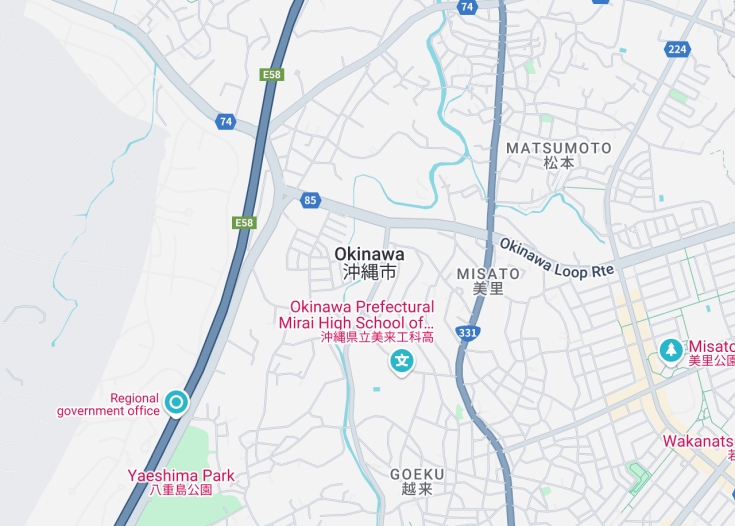Okinawa, Japan’s southernmost prefecture, is a unique blend of breathtaking natural beauty, rich history, and vibrant culture. The archipelago features stunning beaches, clear blue seas, and a tropical climate, making it a popular destination for snorkelers, divers, and sun-seekers.
Okinawa’s distinct Ryukyuan culture, with its own language, music, and dance, offers a contrast to Japan’s mainland traditions. Historical landmarks like the Shurijo Castle add depth to a visit, providing insight into the Ryukyu Kingdom that once thrived here.
Avoid the rainy season from May to June for the best weather. Embrace Okinawa’s outdoor activities, as winter is mild and sunny, ideal for exploring its scenic landscapes.
When visiting Okinawa, try the local cuisine to experience its unique flavors. Dishes like Goya Champuru and Okinawa Soba are must-tries that reflect the island’s cultural diversity.
Top things to do & see in Okinawa
Select the following sights and activities to discover best tickets and tours available in Okinawa.
Okinawa: A Tropical Paradise in Japan
| Country | Japan |
| Time in Okinawa | GMT+9 |
| Language spoken | Japanese |
| Population | 1,457,162 (Source: Okinawa Prefecture, 2023) |
| Currency | Japanese Yen (¥ / JPY) |
| Airports |
|
Okinawa, an archipelago in the southern part of Japan, balances a unique blend of Japanese and American influences in its culture due to its historical significance from World War II. As the largest island and the cultural and economic hub, the capital city Naha embodies lively streets filled with bustling markets, iconic sites like Shurijo Castle, and the serene beauty of Okinawa Peace Park. Its unique position in the East China Sea gives Okinawa a more tropical climate compared to the rest of Japan, perfect for exploring pristine beaches, vibrant coral reefs, and participating in water sports like diving and snorkeling.
Where is Okinawa?
Okinawa is located in the southern region of Japan, approximately 400 miles south of the mainland.
Distances:
| Route | Distance by car | Time by car |
|---|---|---|
| Tokyo to Naha | 1,550 miles | Approx. 24 hours (including ferry) |
| Osaka to Naha | 807 miles | Approx. 12 hours (including ferry) |
What is Okinawa famous for?
Known for its distinct culture, Okinawa is celebrated for its longevity among residents, slow-paced lifestyle, martial arts history specifically karate, and significant World War II sites. Additionally, its vibrant festivals and ocean-centric cuisine reflect Okinawa’s rich heritage and reliance on the sea.
History
Ancient Ryukyu (10,000 BC – 1429 AD)
The story of Okinawa starts with the earliest evidence of human settlement dating back to around 32,000 years ago, with more stable communities developing during the Jomon period (ca. 10,000–300 BC). By the 12th century, Okinawa was known as the Ryukyu Kingdom, renowned for its vibrant trade relations that spanned from Japan to Southeast Asia, profoundly influencing its culture and society.
The Gusuku Period (1187-1429)
This era was marked by the development of Gusuku (castles or fortresses) pivotal for regional control, reflecting a period of consolidation of power among local chieftains. The most well-known is the Shuri Castle, the political and cultural heart of Ryukyu civilization, signifying a significant advancement in architectural and societal organization.
Ryukyu Kingdom (1429-1879)
The Kingdom was formally established in 1429 by King Shō Hashi and continued to thrive as a crucial trading nation. The kingdom maintained a unique identity, with its own culture and language, while actively engaging in diplomacy with neighboring countries, including China and Japan, balancing its autonomy with significant foreign influence.
Meiji Period Annexation (1879-1945)
In 1879, the Japanese government abolished the Ryukyu Kingdom, forcibly integrating it as Okinawa Prefecture. This marked a period of significant cultural suppression and economic difficulty, which was compounded by the severe devastations suffered during World War II, particularly the Battle of Okinawa in 1945, one of the war’s bloodiest episodes.
Post-war Reconstruction and Modern Okinawa (1945-Present)
Following World War II, Okinawa was under U.S. military governance until 1972, after which it was returned to Japan. The post-war period was characterized by robust reconstruction efforts, economic development, and political evolution. Today, Okinawa is a vibrant hub of cultural heritage, tourism, and U.S. military bases, continuing to negotiate its complex historical legacy and modern identity.
Visit Okinawa
What to see and do in Okinawa
Okinawa, Japan offers a unique blend of cultural and natural attractions that are unparalleled. From the historical majesty of Shuri Castle to the serene beauty of the Kerama Islands, the prefecture is a tapestry of experiences.
Nature enthusiasts can explore the Yaeyama Islands for some of Japan’s best diving spots, or visit the Churaumi Aquarium to see the majestic whale sharks. History buffs will find the Peace Memorial Park poignant and enlightening. For a taste of local life, the Naha’s Makishi Public Market offers an array of traditional Ryukyu culinary delights.
Festivals and Events
Okinawa is home to vibrant festivals throughout the year. The Naha Hari (Dragon Boat Races) in May, the Eisa Dance Festival in summer, showcasing traditional Okinawan dance and drumming, and the Shuri Castle Festival in autumn, celebrating the rich history and culture of the Ryukyus, are highlights not to be missed.
Best time to visit Okinawa
The best times to visit Okinawa are during the spring (March to May) and autumn (September to November) when the weather is most pleasant, and the natural scenery is at its peak. These periods avoid the rainy season of June and the high heat and tourist crowds of the summer months.
Is Okinawa worth visiting?
Okinawa offers a distinct blend of cultural richness, historical depth, and stunning natural beauty that makes it a worthy destination. However, visitors should be prepared for potentially crowded attractions and the subtropical climate, which can be challenging in the summer.
The presence of U.S. military bases is also a unique aspect of Okinawa, occasionally influencing local dynamics. Despite these elements, its diverse offerings from serene beaches to vibrant festivals provide a fulfilling experience for all types of travelers.










